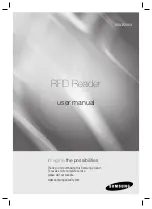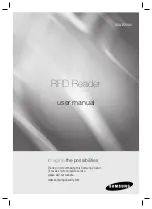
STEP 8
(Cable / Sheave Installation)
1. Inspect Cables to ensure proper lengths. All Cables should
have ID tags showing proper Cable lengths.
2. In order to install the Cables it is necessary to first extend the
Hydraulic Cylinder. Remove both Cylinder port plugs then use
an air gun or come-along to extend the Cylinder.
IMPORTANT! -
Be careful not to damage the chrome rod
during this step. (See Fig. 8.1)
3. Loosely route the Cables around the Sheaves, (refer to
the diagram on page 16), and then install the Sheave Pin
and screw in the Sheave Pin Retaining Screw. (It may be or
necessary to loosen the Sheave Pin and move or adjust the
pulleys during cable installation.) (See Fig. 8.2)
STEP 9
(Cable Installation)
1. Make sure the Cylinder Flange Plate is installed with the guide
assembly facing down and the Cylinder retainer plate on the
outside of the guide. Lug ends of cables start at Cylinder.
(See Fig. 9.1)
2. Route the threaded Cable ends through the ends of each
Cross Tube, over the Slack Safety Sheave then to the top of
each Column. Secure using the M22 Hex Head Nuts and
Flat Washers. Tighten each nut until there is at least one inch
of threads protruding through the top of the Nut. The Cables
will remain loose until start up and final Cable adjustments are
made. (See Fig. 9.2 - 9.3)
17
DO NOT PROCEED
unless visual confirmation is made
of ALL safety locks. ALL locks MUST be engaged before
proceeding. Failure to comply with these instructions may
result in severe personal injury or death. (See page 14)
WHEN THE CABLE ADJUSTING NUTS BOTTOM OUT
ON THE THREADED END OF THE CABLE
CONNECTOR AND THERE IS STILL SLACK IN THE
CABLES, THE CABLES HAVE STRETCHED BEYOND
THE SAFE USEFUL LENGTH AND NEED TO BE
REPLACED WITH FACTORY APPROVED CABLE
ASSEMBLIES. DO NOT PLACE WASHERS, SPACERS
OR OTHER DEVICES TO “SHORTEN” THE
EFFECTIVE CABLE LENGTH AS DAMAGE TO THE LIFT
OR INJURY TO PERSONS MAY OCCUR.
Fig. 8.1
Fig. 8.2
Fig. 9.1
Failure to route lifting cables as described may lead
to serious personal injury and/or death to operator or
bystander and/or may cause damage to property.
















































